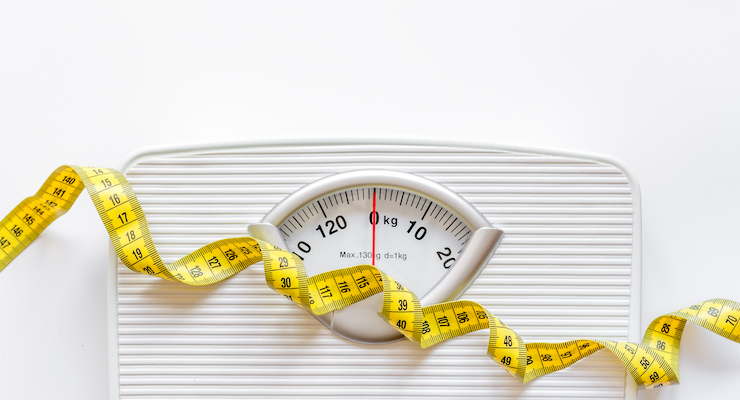Mike Montemarano, Associate Editor 02.23.21
A new clinical trial published in the journal Nutrients found that a formulation of polyphenol extracts sourced from grape, grapefruit, green tea, guarana, and black carrot, marketed as Fiit-ns by supplier Fytexia, was able to improve body weight and composition in obese participants, along with significantly improving scores in health-related quality of life questionnaires compared to placebo.
72 overweight and obese but otherwise healthy volunteers were involved in a 16 week treatment period in which they received either a placebo or a daily supplementation of 900 mg of the polyphenol extract – the Fiit-ns group saw several significant benefits compared to the placebo group.
All clinical trial participants took part in an SF-36 validated questionnaire to investigate changes in the health-related quality of life (HR-QOL) index over the duration of the treatment period. According to the results, the experimental group had an overall HR-QOL improvement of 5.3%, which included enhanced physical (+11.2%) and mental health (+4.1%) scores, compared to no significant changes in the placebo group. Body pain, vitality, and general health were the components of the survey that had the greatest contribution.
The body weight of the supplemented group also significantly decreased by an average of 1.3 kg (about 2.86 lb), mainly within the trunk area (1.0 kg), suggesting improvements to overall body composition. Consequently, the waist size of the experimental group significantly decreased by 1.1 cm, lowering the group’s Index of Central Obesity by 1.3%. No significant changes to body composition were seen in the placebo group.
“Such an improvement may, to some extent, positively impact the HRQUOL,” the authors of the study wrote. “Moreover, the amount of weight loss and the level of HRQOL improvement may be directly interconnected.”
Lastly, the experimental group experienced a significant increase in physical activity engagement, at 1,308 Metabolic Equivalent Task minutes greater than the placebo group.
“As volunteers were encouraged to maintain their usual physical activity level throughout the course of the study, it can be hypothesized that the significantly higher physically active lifestyle reported within the supplemented group is not the result of conditioned mental engagement only,” the authors wrote. “Indeed, the increase of HRQOL, and namely the feeling of increased vitality, may explain such a rise in physical activity.”
“The mechanisms of action likely involve improvements in vascular function via well-known antioxidative and anti-inflammatory properties of phenolic compounds,” the authors of the study concluded. “Such beneficial effects may be extended to other situations where HRQOL is impaired, particularly during the aging process, where an imbalance of body composition and a loss of vitality and physical functioning associated with a more sedentary lifestyle are commonly observed.”
72 overweight and obese but otherwise healthy volunteers were involved in a 16 week treatment period in which they received either a placebo or a daily supplementation of 900 mg of the polyphenol extract – the Fiit-ns group saw several significant benefits compared to the placebo group.
All clinical trial participants took part in an SF-36 validated questionnaire to investigate changes in the health-related quality of life (HR-QOL) index over the duration of the treatment period. According to the results, the experimental group had an overall HR-QOL improvement of 5.3%, which included enhanced physical (+11.2%) and mental health (+4.1%) scores, compared to no significant changes in the placebo group. Body pain, vitality, and general health were the components of the survey that had the greatest contribution.
The body weight of the supplemented group also significantly decreased by an average of 1.3 kg (about 2.86 lb), mainly within the trunk area (1.0 kg), suggesting improvements to overall body composition. Consequently, the waist size of the experimental group significantly decreased by 1.1 cm, lowering the group’s Index of Central Obesity by 1.3%. No significant changes to body composition were seen in the placebo group.
“Such an improvement may, to some extent, positively impact the HRQUOL,” the authors of the study wrote. “Moreover, the amount of weight loss and the level of HRQOL improvement may be directly interconnected.”
Lastly, the experimental group experienced a significant increase in physical activity engagement, at 1,308 Metabolic Equivalent Task minutes greater than the placebo group.
“As volunteers were encouraged to maintain their usual physical activity level throughout the course of the study, it can be hypothesized that the significantly higher physically active lifestyle reported within the supplemented group is not the result of conditioned mental engagement only,” the authors wrote. “Indeed, the increase of HRQOL, and namely the feeling of increased vitality, may explain such a rise in physical activity.”
“The mechanisms of action likely involve improvements in vascular function via well-known antioxidative and anti-inflammatory properties of phenolic compounds,” the authors of the study concluded. “Such beneficial effects may be extended to other situations where HRQOL is impaired, particularly during the aging process, where an imbalance of body composition and a loss of vitality and physical functioning associated with a more sedentary lifestyle are commonly observed.”




























